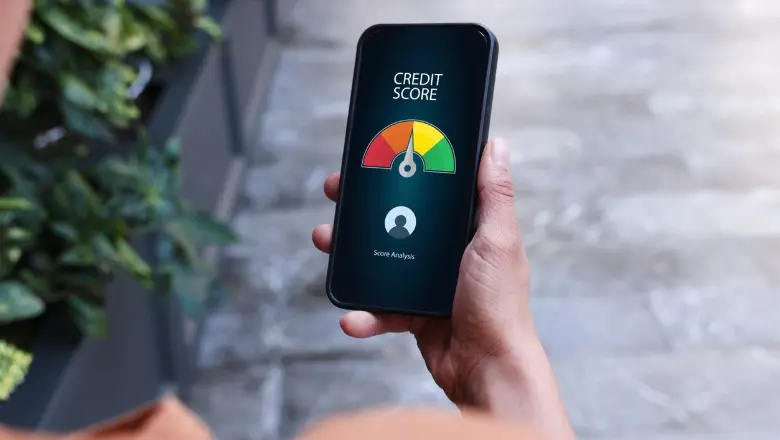What Is the Average Credit Score for a 24-Year-Old?
According to 2024 data from Experian®, the average credit score for a 24-year-old is 681. That’s one point higher than the 2023 average and is considered a “good” FICO® Score.
Here, we’ll walk you through the ins and outs of how your age can impact your credit score, how a 681 stacks up against the average score in the U.S., and ways to build your score over time.
Key Points
• The average credit score for a 24-year-old is 681, 36 points lower than the U.S. average of 717.
• Payment history, credit utilization, and length of credit history impact young adults’ credit scores.
• Tips to improve credit scores include timely payments, low credit utilization, and becoming an authorized user on a strong credit account.
• A 681 credit score is classified as “good” by FICO.
• Regularly reviewing credit reports and avoiding multiple new credit applications can help maintain and improve credit scores.
Average Credit Score for a 24-Year-Old
As mentioned, the average credit score for a 24-year-old is 681, which the credit scoring model FICO classifies as “good.” With that score, you’re likely to qualify for an array of loans and credit cards, though you may not get the best interest rates and terms.
But take heart: Credit scores tend to increase with age. According to Experian data, the average credit score for Millennials (ages 28 to 43) is 691. Gen X (ages 44 to 59) has an average score of 709, while members of the Silent Generation (ages 79+) boast a 760 score.
What Is a Credit Score?
A credit score is a three-digit number that ranges from 300 to 850. It helps lenders and creditors gauge your creditworthiness, or the likelihood that you’ll pay back the money you borrowed. Generally speaking, the higher your score, the greater your chances of being approved for a credit card or loan.
Two common credit scoring models are FICO and VantageScore®. Most lenders use FICO. Though both models create scores based on similar key factors, the breakdown of scores is slightly different.
FICO Score
• Exceptional (or excellent): 800 to 850
• Very Good: 740 to 799
• Good: 670 to 739
• Fair: 580 to 669
• Poor: 300 to 579
VantageScore
• Super prime: 781 to 850
• Prime: 661 to 780
• Near prime: 601 to 660
• Subprime: 300 to 600
Recommended: FICO Score vs. Credit Score
What Is the Average Credit Score?
According to the latest FICO data, the average FICO credit score in the U.S. is 717 — 36 points higher than the average 24-year-old’s score. And as of February 2025, the average VantageScore is 701. Both scores are well within the “good” or “prime” range, and could help borrowers qualify for favorable loan and line of credit terms.
Average Credit Score by Age
Age doesn’t necessarily determine your credit score. But as the chart below shows, the older you are, the more likely you are to have a higher score.
| Age Group | Average Credit Score |
|---|---|
| Gen Z (18-27) | 681 |
| Millennials (28-43) | 691 |
| Gen X (44-59) | 709 |
| Baby Boomers (60-78) | 746 |
| Silent Generation (79+) | 760 |
This makes sense. When you’re just starting out — as many 24-year-olds are — you may not have a long credit history. Plus, you might experience greater financial ups and downs as you find your professional footing, and this could impact your ability to pay off debts.
What’s a Good Credit Score for Your Age?
As we mentioned, the average credit score for a 24-year-old is 681. But remember, that’s just an average. No matter how old you are, FICO defines a good credit score as anywhere between 670 and 739. If your score falls within that range, your finances are likely in a sound place.
It’s worth noting that when you’re starting out, you may not have a credit score. Your credit history typically starts when you take out your first line of credit, and it normally takes around six months or so for credit bureaus to collect enough information for your starting credit to be calculated.
Though it can vary, a starting credit score may be anywhere from 500 to 700. You can gradually see it rise as you continue to bolster your credit.
Track your credit score with SoFi
Check your credit score for free. Sign up and get $10.*
and get $10 in rewards points on us.
RL24-1993217-B
How Are Credit Scores Used?
Credit scores are used in several ways. Lenders and creditors review your credit when you apply for a card or loan to help determine whether you qualify for financing. As you might expect, the higher your score, the greater your odds of getting approved for a credit card or loan with more favorable terms and rates.
But credit scores can also play a role in unexpected ways. For instance, this three-digit number could help determine how much you pay for insurance premiums or whether you’re approved to rent a home. And some potential employers might review your score during a routine background check.
Factors Influencing the Average Credit Score
To steadily build your credit score, it helps to understand the five key factors that influence it the most. Here’s a closer look at each component — and how much it counts toward your overall score.
• Payment history (35%). Your track record of bill paying has the biggest impact on your FICO Score, so aim to pay your bills on time, every time. A spending app can help budget for the payments.
• Credit utilization (30%). Also known as credit usage, this is how much credit you’re tapping into against the total amount available. Try to keep your credit card utilization low, as ringing up a too-high balance might signal to lenders and creditors that you’re spread thin financially.
• Length of credit history (15%). A longer credit history shows lenders that you have a solid track record of using credit. Generally, the older the average age of your credit accounts, the higher your score tends to be.
• Credit mix (10%). Having a diverse mix of credit can signal that you can responsibly manage different forms of debt. That said, you’ll want to only apply for the financing you need.
• New credit (10%). When you apply for credit, a lender performs a hard credit pull, which can ding your credit score by a few points. Though the dip is temporary, it could stay on your credit report for up to a year.
How to Strengthen Your Credit Score
If you’re in your 20s, you might be in the early phases of understanding how long it takes to build credit. Here are a few things you can do to gradually lift your credit score.
Stay on Top of Payments
As we discussed, your payment history has a major impact on your credit score. Consider setting up automatic payments or changing your due dates to a time of the month that works better for you. For example, if the main cluster of bills is due at the top of the month, schedule your monthly credit card payments so they fall after your second paycheck. A money tracker app can help you keep track of payments so you won’t miss a due date.
Keep Credit Usage Low
If you have a credit card balance, try to ensure your credit utilization doesn’t exceed 30%. For instance, let’s say your credit limit on all your cards is $2,000. To maintain a 30% credit usage, you’ll want to carry a balance no larger than $600.
If you want to see whether your hard work is paying off, you can check your credit score for free.
Limit New Credit Application
There are reasons why you should avoid applying for unnecessary credit. For starters, a lender will likely do a hard inquiry with each application, which can temporarily ding your score. Also, applying for multiple lines of credit within an extremely short time frame could signal to lenders that you’re financially strapped.
There is an exception: If you shop for an installment loan, like a car loan or mortgage, lenders give you anywhere from 14 to 45 days to shop for rates. The hard pulls generally count as a single inquiry when you are rate shopping.
How Does My Age Affect My Credit Score?
While age doesn’t factor into your credit score, you may notice that your three-digit number may improve as you get older. This is because as you age, you’ve had more time to establish an account history and may have an easier time managing your debt obligations.
What Factors Affect My Credit Score?
As we discussed, the top factors impacting your credit score are payment history, credit usage, length of credit history, credit mix, and new credit.
If you’ve made some financial blunders and want to build or repair your credit, work on fixing the areas that have negatively impacted your score the most. So, for example, if you’ve fallen behind or missed payments, you’ll want to start paying bills on time.
Keep in mind that boosting credit doesn’t happen overnight. Your credit score updates every 30 to 45 days, so resist the urge to constantly check on your score. Instead, you’d be better off focusing on strategies that build up your credit.
At What Age Does Your Credit Score Improve the Most?
According to Experian data, the biggest jump in credit scores tends to happen between Gen Z and Baby Boomers. But again, the longer you’ve been responsibly managing an account, the higher your score will likely be.
How to Build Credit
There are several ways to build your credit — here are a few simple strategies to explore:
Become an Authorized User
If you have a family member or trusted friend with a solid credit history, ask if they can add you as an authorized user on your card. You’ll be able to make purchases with the card, but the primary cardholder is responsible for making payments.
Report Rent and Utility Payments
Alternative credit reporting, such as reporting your rent, cell phone bill, and utility payments, can be another way to improve your score when you’re just starting out. You usually need to sign up with a third-party platform that reports your on-time payments to the credit bureaus, and you may be required to pay a monthly subscription fee.
Open a Secured Credit Card
A secured credit card is usually easier to get than an unsecured one, though it requires you to put down a security deposit that typically matches your credit limit. Otherwise, a secured card works just like any other credit card. Making timely payments and using credit responsibly can help build your score.
Credit Score Tips
Besides being mindful of best practices to build your credit, you’ll want to check your credit score every so often and note any changes. You may be able to do this with credit score monitoring tools or through your bank or credit card company.
It’s also a good idea to regularly review your credit report for mistakes or inaccuracies. You can receive a free copy of your report each week via AnnualCreditReport.com.
Recommended: Why Did My Credit Score Drop After a Dispute?
The Takeaway
To recap, what’s the average credit score for a 24-year-old? According to Experian, it’s 681, which falls into the “good” category. When you practice sound financial behaviors, your score could increase even more over time. For instance, staying on top of payments, paying down debt, and keeping credit accounts open can all help bolster your score.
Take control of your finances with SoFi. With our financial insights and credit score monitoring tools, you can view all of your accounts in one convenient dashboard. From there, you can see your various balances, spending breakdowns, and credit score. Plus you can easily set up budgets and discover valuable financial insights — all at no cost.
FAQ
What is a good credit score for a 24-year-old?
The average credit score for someone who is 24 is 681, which is technically considered a “good” FICO score. Younger consumers who are starting out on their credit-building journey may have a harder time achieving an excellent score.
What is a good credit limit for a 24-year-old?
The average credit limit for 24-year-olds in the U.S. is $12,899, according to Experian. However, what’s considered good depends on the individual’s finances, spending habits, and ability to pay down the balance.
How rare is an 800 credit score?
According to Experian data, 22% of Americans have a credit score of 800 or higher, which is considered an excellent score.
Is a 900 credit score possible?
Consumer credit scores range from 300 to 850, so a 900 credit score isn’t feasible.
Is 650 a good credit score?
A 650 credit score falls in the “fair” range. With a fair credit score, you can get approved for some forms of financing, but you’ll likely get higher interest rates and the less-favorable terms.
What credit score is needed to buy a $300K house?
If you’re buying a home with a conventional loan, you’ll need a minimum credit score of 620. Lenders may accept a credit score as low as 500 if you’re taking out an FHA loan.
Photo credit: iStock/blackCAT
SoFi Relay offers users the ability to connect both SoFi accounts and external accounts using Plaid, Inc.’s service. When you use the service to connect an account, you authorize SoFi to obtain account information from any external accounts as set forth in SoFi’s Terms of Use. Based on your consent SoFi will also automatically provide some financial data received from the credit bureau for your visibility, without the need of you connecting additional accounts. SoFi assumes no responsibility for the timeliness, accuracy, deletion, non-delivery or failure to store any user data, loss of user data, communications, or personalization settings. You shall confirm the accuracy of Plaid data through sources independent of SoFi. The credit score is a VantageScore® based on TransUnion® (the “Processing Agent”) data.
*Terms and conditions apply. This offer is only available to new SoFi users without existing SoFi accounts. It is non-transferable. One offer per person. To receive the rewards points offer, you must successfully complete setting up Credit Score Monitoring. Rewards points may only be redeemed towards active SoFi accounts, such as your SoFi Checking or Savings account, subject to program terms that may be found here: SoFi Member Rewards Terms and Conditions. SoFi reserves the right to modify or discontinue this offer at any time without notice.
Disclaimer: Many factors affect your credit scores and the interest rates you may receive. SoFi is not a Credit Repair Organization as defined under federal or state law, including the Credit Repair Organizations Act. SoFi does not provide “credit repair” services or advice or assistance regarding “rebuilding” or “improving” your credit record, credit history, or credit rating. For details, see the FTC’s website .
Third-Party Brand Mentions: No brands, products, or companies mentioned are affiliated with SoFi, nor do they endorse or sponsor this article. Third-party trademarks referenced herein are property of their respective owners.
Financial Tips & Strategies: The tips provided on this website are of a general nature and do not take into account your specific objectives, financial situation, and needs. You should always consider their appropriateness given your own circumstances.
Third Party Trademarks: Certified Financial Planner Board of Standards Center for Financial Planning, Inc. owns and licenses the certification marks CFP®, CERTIFIED FINANCIAL PLANNER®
SORL-Q225-017
Read more



